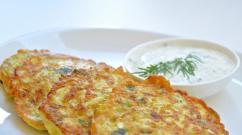Svinushka (svinukhi) mushrooms: description and photo. What does the false pig mushroom look like?
very popular and well known to experienced mushroom pickers. It appears long before other mushrooms and bears fruit abundantly before late autumn.
Did you know? Pig mushrooms external description similar to a pig's ear. This similarity is observed in the obliquely growing mushroom cap. The reason for this was the stem, which is attached not in the center of the mushroom cap, but offset.
Let's look at the varieties of the pig mushroom and see if they can be eaten.
Thin pig (lat. Paxillus involutus)
Svinushka thin is a mushroom of the Svinushka family of the order Boletaceae. Now the mushroom is considered poisonous, but until 1981 it was classified as edible. Slender pig grows in the forests various types and is similar in description to other varieties of this mushroom. The mushroom cap grows 12-15 cm in diameter and has an olive-brown color. At first it has a slightly convex shape with a curled edge, then it is flat with a funnel-shaped depression in the middle. The edge is drooping and may be wavy. The cap is fleshy and darkens at the break. Its surface is felt-fluffy, and later smooth, in damp weather it is sticky. The flesh of the mushroom is dense, soft at first, but in an adult mushroom it is loose and yellowish-brown in color. It does not have a special smell or taste and can be wormy. 
On the underside of the cap there are yellow-brown pseudoplates that easily peel off from the flesh of the cap. The mushroom stem is up to 9 cm high and 2 cm in diameter. Its surface is smooth, matte, dirty yellow, slightly lighter in color than a hat. Fine brown spore powder. Many mushroom pickers argue about the poisonous properties of the thin mushroom. They claim that they have always used this mushroom for food and feel good. Let's figure it out, little pig - poisonous mushroom or not.
The first fatal case of eating pork was recorded in 1944. German mycologist Julius Schaeffer felt unwell, which developed into vomiting, diarrhea and fever. He died 17 days later. The cause was acute renal failure. The main thing is that the symptoms of poisoning do not always appear and not immediately. Pig contains lectins that are not destroyed by heat treatment. In the 80s of the twentieth century. Swiss doctor Rene Flammer discovered that the pig's antigen is capable of fixing on the membrane of red blood cells and provoking immune system produce antibodies and fight against their own red blood cells. As a result, a person develops hemolytic anemia and kidney failure. Since it takes some time for the body to produce antibodies, symptoms of poisoning may not appear immediately. Also, the sensitivity of each organism to fungal toxins is very different. Therefore, in 1984, by order of the deputy chief sanitary doctor USSR thin pig is included in the list poisonous mushrooms.
Important! There is no antidote for pig poisoning. If you feel unwell after eating mushrooms, you should contact your medical institution for monitoring blood counts, kidney function, blood pressure, water-electrolyte balance and correction of deviations from the norm.
Alder pig (lat. Paxillus filamentosus)
Alder or aspen pigweed is a less common species. It got its name from its preferred location under aspen or alder. It has many external similarities with the thin pig, but differs in its cap, which has a scaly-cracked surface with a more yellowish-red tint. Alder pig, like thin pig, is poisonous, although some mushroom pickers still consider it conditionally edible. 
Thick pig (felt) (lat. Tapinella atrotomentosa)
The most common types of pigs include both thin pigs and thick pigs. It is a mushroom of the Tapinella family of the order Boletaceae. The mushroom has a cap with a diameter of 5-15 cm, first convex, hemispherical in shape, and later tongue-shaped with a funnel-shaped depression in the center. The surface of the cap is velvety or smooth with a rusty brown color. The edges are turned up. On the underside it has a frequent lamellar layer, cream-colored in young mushrooms and brown in mature ones. The leg is about 7 cm high and up to 3.5 cm in diameter, cylindrical in shape, can be attached centrally or with a lateral offset. 
Its surface is velvety, dark brown in color. It is often completely immersed in the substrate. The flesh of the mushroom is whitish-yellow in color, without any particular odor, with a bitter taste.. It has the ability to swell in the presence of moisture and darkens when broken. Mushroom spore powder is yellow-brown in color. Ammonia colors the flesh of the fat pig a bright lilac color, and potassium hydroxide (KOH) - green-black. Fat pig refers to
conditionally edible mushrooms
. Abroad, it is considered inedible or has unstudied toxic properties. The pulp of these mushrooms contains atromenthin (brown pigment), which acts as an antibiotic and has an antitumor effect, telephoric acid (blue pigment), used to dye wool blue. 
Tapinella panuoides, or ear-shaped pig (lat. Tapinella panuoides) Earwort is a lamellar fungus. The body of the mushroom can have a lateral attachment in the form of flat-shaped caps with a diameter of up to 16 cm, which are located singly or fused on a thickened mycelium in the form of a short stalk. The surface of the cap is felt-like, and later smooth, from yellowish-cream to brownish-purple. The edge of the mushroom is thin, tucked, and may be wavy. The bottom of the cap has narrow plates from yellowish-cream to orange.. The stalk-like base of the mushroom is dense, velvety, brown in color. The pulp is fleshy, light brown in color, and becomes spongy when dried.
Did you know? The mushroom grows from late summer to late autumn singly or in groups on stumps or wood
coniferous species The fungus can settle on the surface of old wooden buildings, causing their destruction. Porcini mushroom is classified as a mildly poisonous mushroom due to the presence of lectins. These toxins cause red blood cells to clump together. 
The name of the mushroom, tapinella panus, translates as carpet. This mushroom is found both in city parks and in the forests of Italy, Germany, Spain, Sweden, Portugal, France, England and in the countries of northern Africa. It is classified as poisonous. The mushroom cap is fleshy, dense, yellow-brown in color, up to 12 cm in diameter. The body of the mushroom itself grows short, up to 10 cm in height. It grows most massively in autumn. The spores of the fungus are large and brown in color. Paxillus obscurisporus mushrooms are deadly poisonous and are similar in description to talking mushrooms (of the genus Clitocybe). Distinctive Features there are brown, not white plates under the cap and brown, not white spores, like those of talkers. The mushroom most often grows under linden trees or other The pulp has no distinctive odor and tastes sour. The cap is golden brown, 4-13 cm in diameter, with a raised wavy edge. The stem of the mushroom is up to 8 cm tall, slightly widens from the ground to the cap and is colored gray-yellow. Fruiting period – July – September. 
A characteristic feature of these pigs is a funnel-shaped cap with a diameter of up to 15 cm, yellowish-brown in color with a reddish tint. The pulp has a whitish-yellow color and changes to red-brown when broken. The surface of the cap is smooth and velvety. The leg is cylindrical, 8 cm high, at first yellow, and then acquires a reddish-brown color. This type of mushroom has become widespread in European countries. This mushroom mushroom prefers to grow on river banks, in light forests with moist soil and forms a symbiosis with alder. 
From conditionally edible representatives of the genus Tapinella false pig differs in appearance. Depending on the growing conditions, mushrooms, photos of which can be seen in this article, are capable of accumulating toxins that are resistant to cooking.
Description of types of pigs
Most varieties of pigs are classified as conditionally poisonous. Since 1981, they have been excluded from the all-Union list of products suitable for cooking. Despite such prohibitions, some species are salted and valued for their taste and cold method canning. The most common are thin-legged, alder and fat pig, other names are cowshed, dunka, pig. We will consider them in this article.
What do mushrooms look like and where are they collected?
Pigs can be found in deciduous or coniferous forests, on the edge next to the clearings. Often a barn grows on uprooted tree roots, old anthills, and clearings. It grows in moist soil and is found in summer and autumn.
Thin and aspen pigweed differ in their places of growth, appearance and cap color.
Thin pig - poisonous mushroom

Thin pig (bottom view)
Alder pigtail's cap: 8-20 cm in diameter, initially convex. The color is brown or brown with an olive tint.

Alder pig (poisonous)
External features and their properties
The pig cannot be confused with other species due to distinctive features: beautiful velvety cap, plates, coloring. The surface is velvety, as it matures it becomes dry, cracks, and takes on a disproportionate shape. The plates are descending, frequent, and branching in shape. They have a yellowish color that turns dark when pressed.
Pork mushroom, poisonous or edible
Pigs are conditionally edible if they belong to the Tapinella genus. The pig is thin and alder, unlike other representatives of the genus, and can be hazardous to health.
Similar species and look-alikes
It is practically impossible to find poisonous mushrooms similar to the fat mushroom due to the thick, velvety brown stem. It is impossible to confuse it with any mushroom. It is somewhat similar to the Green moss and Polish mushroom- but they are not dangerous.

Fat pig (conditionally edible mushroom)
Although, even edible varieties, depending on the place of growth, can accumulate muscarine poison, similar to the fly agaric toxin, in dangerous quantities. An overgrown and old false barn is capable of accumulating toxic substances.
Symptoms of poisoning
Symptoms of poisoning may appear several hours after eating the mushroom. First signs:
- vomit;
- nausea;
- diarrhea;
- stomach ache;
- weakness;
- dizziness.
Real false pigs promote the production of antigens, which gradually accumulate in the body, causing an autoimmune allergic reaction over time. The result of this interaction is anemia, kidney and liver failure. Severe poisoning can be fatal.
First aid for poisoning
To remove the toxin that has entered the body, gastric lavage is performed. If intoxication occurs quickly, cleansing the intestines with a special saline solution is indicated. As a result, the removal of toxins and waste from the blood is achieved.
Let's talk about secrets
Pig mushrooms grow mainly in large groups, so if one mushroom is found, it is recommended to carefully examine the surrounding area.
The edibility of a mushroom is easy to determine: you can distinguish it from a poisonous one by lightly pressing on the base of its cap - inedible species They darken quite quickly in the air.
In Chinese medicine, the mushroom is used to relax muscles.
Before you go on a quiet hunt, it is better to study mushrooms from photos so as not to risk your health. Do not collect in close proximity to highways and roads. general purpose, since fungi of this genus are capable of quickly accumulating various toxins and products released during the operation of transport.
Arguments about edibility
Despite proven poisonous properties, pigs continue to be used as a conditionally edible mushroom. Therefore, an important criterion is the ability to distinguish from each other different kinds mushrooms of the genus pigs.
Svinushka thin is a mushroom of the Svinushka family, genus Svinushka. Until 1981, these mushrooms were considered conditionally edible, they were classified as category 4 in terms of taste, but today they are classified as poisonous. The thin pig is also called filly, cowshed, pig, sow, solokha, pig's ear, dunka, solopena and pig's ear.
Latin name mushroom - Paxillus involutus.
Description of the thin pig
The diameter of the thin cap is 12-15 centimeters, in rare cases it can reach up to 20 centimeters. The cap is fleshy, at first its shape is slightly convex with a felted, rolled edge, then it becomes flat, while in the middle it is funnel-shaped and depressed, in rare cases it becomes funnel-shaped. The edge is ribbed, often wavy.
The color of the cap in young specimens is olive-brown or olive-brown, while in adults it varies from rusty-brown to gray-brown. When cut and pressed, the mushroom darkens. IN at a young age the surface of the cap is dry, fluffy, fibrous to the touch, and becomes smoother in adulthood. In damp weather the cap becomes sticky and shiny.

The pulp is dense, becoming loose with age. The color of the pulp is pale yellow, yellow-brown or brownish, becoming darker when cut. In dry weather, the pulp often becomes wormy. It has no special smell or taste.
The hymenophore is folded, descending, called pseudoplate. The folded layer is easily separated from the lower surface of the cap, unlike real plates. The color of the pseudoplates ranges from rusty-brown to yellow-brown, they are lighter than the cap, and become dark when pressed. Spore powder is brown.
The leg is short, its length reaches 9 centimeters, and its diameter reaches 2 centimeters. The structure of the leg is solid. Its surface is matte, smooth, dirty yellow or ocher-olive in color. The color of the stem is lighter than the cap or can be almost the same tone as it.

Ecology and distribution of the tonka pig
These mushrooms grow in various types of forests, they are mainly found in shady, damp places. Sometimes they can even settle on tree trunks. Slender pigs grow in groups, but are rarely found singly. They occur in large numbers from June to October. Thin pigs bear fruit every year and often.
Toxicity of the thin pig
The poisonous properties of the tonka were first noted in 1944, when the German mycologist Julius Schaeffer ate them and felt unwell, vomiting, fever and diarrhea. After 17 days, the scientist died, the cause was acute renal failure.
Fatality after eating thin pork occurs due to the content of a toxin in it - lectin, which is not destroyed even when boiled.

Svinushka provokes a powerful allergic reaction. In the 1980s, physician Rene Flammer discovered the pig antigen, which causes the development of autoimmune reactions by breaking through one’s own red blood cells. After some time of consumption of the fungal antigen, an immune response is formed, in which antibodies are produced that damage the cells with the membranes of the pig's antibodies. The destruction of red blood cells by antibodies provokes hemolytic anemia and renal failure.
Because antibodies take time to develop, the autoimmune reaction is most severe in people who frequently consume pork, especially if they have a history of gastrointestinal problems. The human body's sensitivity to toxins varies, and children suffer the most.
In addition, it is believed that the thin pig accumulates radioactive isotopes of copper and cesium. The content of these elements in mushrooms can be tens and hundreds of times higher than in the soil.

In 1981, the USSR Ministry of Health excluded thin svinushka and thick svinushka from the list of mushrooms allowed for consumption. And in 1984, according to the order of the chief sanitary doctor, this mushroom began to be considered poisonous. In 1993, pig mushroom was added to the list of inedible and poisonous mushrooms.
Symptoms of Pork Poisoning
The first to develop are gastrointestinal symptoms: diarrhea, vomiting, abdominal pain, while the volume of circulating blood decreases. Symptoms of intravascular hemolysis soon appear: jaundice, pallor, decreased diuresis, formation of hemoglobin in the urine, and in severe cases, oligoanuria.
Poisoning with pigweed can cause serious complications: shock, intravascular coagulation and acute renal failure.

Treatment for poisoning with pigweed
There is no antidote. To reduce the severity of the autoimmune reaction, antihistamines are used. During maintenance treatment, blood counts, kidney function, water and electrolyte balance and blood pressure are checked. Corticosteroids are used as an additional treatment method, which can reduce the severity of complications. Antibodies are removed from the blood using plasmapheresis. And kidney failure is treated with hemodialysis.
Other mushrooms of this genus
Alder pig, also known as aspen pig - that's enough rare mushroom, which has external resemblance with thin pork. These mushrooms got their name because they grow under aspen and alder trees. Like the thin mushroom, the alder pig is a poisonous mushroom.
You can distinguish the alder pig from the thin one thanks to its cracking cap and more yellow-red hue. In addition, these mushrooms differ in where they grow.
Fat pigs are rare to find. These mushrooms begin to bear fruit in July and continue until late autumn. They grow singly or in small groups. Fat pigs can grow on the ground, on roots and stumps. They prefer coniferous and, in rare cases, deciduous forests. You can distinguish the alder pig from the thin one thanks to the cracking cap and a more yellow-red hue. In addition, these mushrooms differ in where they grow.
The thick pig has a cap with a diameter of 8-20 centimeters. Its color is olive-brown or brown. At a young age, the surface of the cap is velvety, felt, but as it matures it becomes bare, dry and can crack. Young specimens have convex caps, but later they expand and become tongue-like. The edges are slightly curled, and the central part of the cap is depressed. The leg is short, thick and fleshy. Its surface is also velvety. Most often, the legs are shifted to the edges of the caps. The height of the leg is 4-9 centimeters. The appearance of this mushroom is massive.
Fat pigs are rare to find. These mushrooms begin to bear fruit in July and continue until late autumn. They grow singly or in small groups. Fat pigs can grow on the ground, on roots and stumps. They prefer coniferous and, in rare cases, deciduous forests.
There are more than 30 varieties of Dunki. Description appearance fruiting bodies of representatives of the genus Paxillus have common features. The shape of the cap is wavy, at a certain angle it resembles a pig’s snout.
The fruiting body looks like a milk mushroom. The cap is fleshy and spreading. The shape can be elongated or round. The average size of the cap is 10-15 cm. Some specimens grow up to 35 cm.
According to the description, young fruits have a convex cap shape. With age, it becomes flattened, becomes dry and cracks. A concavity is formed in the center. After rain, the dry and rough surface becomes sticky.
The color also varies. The pig is found in white, brown, olive, brown and black colors. The color of the leg is the same, only the shade changes.
Types of mushrooms and their distribution
Varieties of pig a large number of. All of them grow in deciduous and coniferous forests, and also love swampy areas. Dunki prefer temperate climate, so they are often found in Europe, Asia and even North America.
Svinushka is a whole genus of mycelium. There are 35 species in total. The most common pigs are:
- Thin. Such fruiting bodies are popularly known as Poddubniki. They sprout at the roots of fallen trees. Their cap is round and slightly wavy. The diameter often reaches 20 cm. The color is brown. As the cap ages, it becomes gray shade. The leg is creamy, short, up to 8 cm long.
- Alder. Distributed in most European countries. It is distinguished by a funnel-shaped hat, with a diameter of 6-8 cm. Alder Pig has Brown color, scaly structure, there are cracks. The pulp is yellow, there is no smell.
- Felt (black pig). Grows only in coniferous forests. This pig mushroom has a large rounded hat, the edges of which are curved towards the stem. The color is brown, brown. A black tint often appears. The leg is brown or brown, with a velvety surface.
- Ear-shaped. It is distinguished by its small leg size (does not exceed 3 cm) and a large fan-shaped cap. Its dimensions reach 14 cm. The surface of the cap is rough, but becomes smooth with age. The color is light brown. The pulp is yellow and has a pine aroma.
- Gigantic. This dunka has a huge cap size. Diameter - 25-30 cm. Wavy shape, white color. The species is widespread in Europe. It grows by mycelium in Russia, as well as the Caucasus.
Vernallis pig mushrooms (Paxillus Vernallis) are found in the forests of North America. This species is known for its symbiotic relationships with certain plants. It grows on birch and aspen.
Southern European countries suffer from the spread of another poisonous mycelium - Paxillus ammoniavirescens. It grows not only in the forest belt, but also in city parks and alleys. The appearance of the mushroom is similar to others. It has a spreading, fleshy cap of beige or olive color with a diameter of up to 15 cm. It is rough at the edges and smooth in the center. The leg is medium, 5-8 cm.
Is the pig edible?
To beginning mushroom pickers, pig mushrooms often seem similar to other edible types of mycelium. This poisonous fruit grows in the same conditions as edible fruiting bodies.
Dunka was banned from collecting in 1993 due to a series of poisonings. The first one famous case death is dated 1944, when mycologist J. Sheffer tasted pig mushrooms. He had severe abdominal pain, vomiting and diarrhea. Schaeffer died 17 days after the meal.
The mushroom is inedible. Harm from its use:
- Svinushka mushrooms contain a dangerous toxin, the concentration of which remains high even after prolonged heat treatment of the fruit. Some varieties of mycelium contain the poison muscarine, the toxicity of which is comparable to the poison of the red fly agaric.
- The product contains antigens, which, when entering the body, destroy the cell membranes of the mucous membrane internal organs. The result of consuming such fruiting bodies is unpredictable. Anemia, nephropathy and renal failure may develop.
- The pig mushroom contains chemical compounds based on heavy metals, as well as radioactive particles.
Svinushka is a poisonous mushroom; even its accidental consumption leads to allergic reactions, disruption of internal organs and systems, severe poisoning and death. When you see a place where such mycelium grows, it is better to avoid it. If in doubt, it is better to show the find to an experienced mushroom picker, who will tell you whether these are false fruiting bodies or not.
Signs of poisoning
Pig mushrooms were previously considered edible, because signs of poisoning did not always appear. The reason is the different sensitivity of people to heavy metals and poisons contained in fruiting bodies.
People with health problems or children received the greatest harm. After consuming the mycelium for 1-3 hours, no symptoms appear. Later people are worried:
- nausea;
- vomit;
- stomach ache;
- diarrhea;
- yellowness of the skin;
- dizziness.
In case of poisoning, an increase in hemoglobin in the urine is observed. Kidney activity is also impaired. Urination becomes rare, and there is a risk of oligoanuria.
The benefits of pigs
The benefits and harms of pigs are often discussed. This type of mycelium is poisonous, but if used correctly it will not cause harm. The benefits of pork are the same as those from eating edible varieties of fruiting bodies. They are also rich in vitamins, amino acids and proteins, and contain a large number of microelements: magnesium, phosphorus, potassium, etc.
Eating such fruits is not dangerous if they are prepared correctly. They will not lead to poisoning or other consequences if:
- Clean them within the first hour after collection.
- Soak the peeled fruits for 24 hours in saline solution with citric acid (this is important for removing poisons and heavy metals from the product).
- Rinse the soaked fruits under running water and boil in salted water for 5-7 minutes.
The pig mushroom is dried and then prepared as desired: stewed with meat and vegetables, included in first courses, pickled or added to salads. Pig mushrooms are also stored for the winter. But it's better not to take risks.
Conclusion
Svinushka is a conditionally edible mushroom. Most varieties are saturated with poisons, heavy metals and radioactive particles. People living in villages continue to collect this mycelium and eat it. The main thing is to properly process it after collection, then the risk of poisoning will be minimized.
fermoved.ru
What are pig mushrooms?
Svinushki are similar to milk mushrooms. The fleshy cap with curled edges in the center is concave, grows to 14–17 cm. In young specimens it is brown with an olive tint, in older specimens it is gray-brown. Feels dry and fluffy or smooth. In rainy, foggy weather it is sticky and unpleasant. If you press hard or cut off the edge, it will darken.
The inside of the mushroom is dense and cream-colored. The color can be different, yellow-brown spectrum. Doesn't smell. In summer, the basket often contains many wormy forest trophies.
The leg is small, within 10 cm, smooth, its color is often identical to the cap, but may differ in brownish yellowness. A characteristic feature of pigs is brownish false plates under the cap. They look like folds and are easily separated from the surface.
They can be found from the end of spring to the beginning of frost almost everywhere: they grow in colonies, rarely alone, in forests, swamps, under trees and bushes, on uprooted stumps and even in abandoned anthills and mosses. The mushroom loves moisture and shade. From one clearing you can collect a small basket full. Found even under coniferous trees, but more often under oak and birch. Sometimes they even grow on trunks.
More than 35 years ago, the pig mushroom was recognized as conditionally edible; according to its taste, it was classified in the fourth category. And in modern reference books there is often information about its unsuitability for food and “mortal danger”.
Slender pig (Paxillus involutus)
Synonyms: pig, pig, pig, pig's ear, solokha, straw, dunka, cowshed.
Properties of pig mushrooms
The toxicity of the pig was first noted in October 1944: the German mycologist Julius Schaeffer, after eating pigs, felt unwell and died 17 days later from acute renal failure. Currently, the mushroom is considered poisonous, although symptoms of poisoning do not always appear or do not appear immediately. The toxicity of the pig is due to various reasons.
Firstly, the mushroom contains toxins (lectins) that are not destroyed even after repeated boiling.
Secondly, pigs can cause a severe allergic reaction. In the mid-1980s, Swiss physician Rene Flammer discovered the pig antigen, which is capable of entering into a chemical bond with the structures of cell membranes, fixing on the membrane of red blood cells and thereby provoking autoimmune reactions against one’s own red blood cells. Some time after consumption, the fungal antigen triggers an immune response, which consists of the production of antibodies that can damage cells that have pigweed antigens on their membranes. The destruction of red blood cells by antibodies causes hemolytic anemia and, as a consequence, nephropathy and renal failure due to damage to the renal glomeruli by fragments of destroyed red blood cells. Since the production of antibodies requires a certain time, the autoimmune reaction is most pronounced in people who have repeatedly consumed pork, especially if they have previously experienced gastrointestinal disorders after such food.
Thirdly, pigweed is a bioaccumulator of radioactive isotopes of cesium and copper.
Banned for sale in Russia since 1981.
The mushroom is dangerous primarily if consumed regularly and repeatedly.
Photo and description of the thin pig
The cap is 5–20 cm in diameter, fleshy, with a rolled edge, round to ear-shaped, olive-brown, yellow-brown to dark brown or rusty-brown, convex to funnel-shaped, dry to mucous, smooth or velvety. In wet weather, shiny and sticky. The plates are yellowish. The pulp is dense, becomes loose with age, yellowish, without any special smell or taste.
Leg 3–10 × 0.6–3 cm, lighter than the cap, smooth. When pressed and cut, all parts of the fruiting body turn brown.
It is found on soil and rotting wood (sometimes on tree trunks), in forests, fields, pastures, parks and squares, in cities, on garden plots. The fungus clearly gravitates towards anthropogenic conditions, loves manured or nitrogen-fertilized soil, abandoned landfills, disturbed forest habitats - clearings, roadsides, ditches, holes, trampled edges, raspberry fields, inversions. Found everywhere from July to early November.
Similar species
A characteristic mushroom that has no doubles.
Pharmacological and medical properties of thin pork
Bioactive components capable of destroying chromosomes have been isolated from the tonka pig. It is currently unknown whether they also have carcinogenic and mutagenic effects or not. These substances were identified as the phenols involuton and involutin (the latter is responsible for browning when pressed and when cut).
In Chinese traditional medicine, the mushroom is used to relax muscles and as an anticonvulsant.
Despite the fact that mushroom pickers are still actively collecting thin mushroom, you should know that it is a poisonous mushroom and not recommended for food use. Fatal poisonings are known. The symptoms are as follows: vomiting, diarrhea and abdominal pain appear first. Soon after, the symptoms of intravascular hemolysis come to the fore: pallor, jaundice, decreased diuresis, the appearance of hemoglobin in the urine, and in severe cases - oligoanuria. Hemolysis can lead to numerous complications, including acute renal failure, shock, acute respiratory failure, and disseminated intravascular coagulation.
 Fat pig (Paxillus atrotomentosus)
Fat pig (Paxillus atrotomentosus)
Family: Pigweeds (Paxillaceae).
Synonyms: black pig.
Photo and description of the fat pig
The mushroom is solid and massive. Cap 8-20 cm, pistachio to dark brown with dark zones and spots, velvety, dry. The plates are yellowish, brown with age, radiating, thick, with numerous bridges between them. The pulp is white or yellowish, with a sour or slightly bitter taste.
When cut and pressed, the plates and flesh slowly turn brown.
The leg is cigar-brown to black-brown, felt-velvety almost throughout its entire height, dense, short, eccentric to lateral.
The mushroom grows in conifers and mixed forests on roots, stumps and trunks, less often on rotting coniferous wood (pine, spruce), much less often grows on deciduous wood and on soil. It is found throughout the forest zone of Russia from July to October.
Similar species
It differs from the poisonous pigweed (P. involutus) primarily in its velvety brown leg.
Pharmacological and medical properties
An interesting biochemical defense mechanism was discovered in the fat pig, which is triggered when the fruiting body is damaged, during which leukomentins located in the tissues are converted into atromenthin, butenolide and the food detergent osmundalactone. Apparently, the mechanism exists to repel damaging insect larvae.
Atrotomentin (a derivative of polyporic acid), which has antitumor activity, has been isolated from the fat pig.
Traditional and folk medicine
Like the tonka, the mushroom is used in Chinese traditional medicine for muscle relaxation and as an anticonvulsant.
Rules for collection and procurement for medicinal purposes
It is not collected in Russia for medicinal purposes.
Edible mushroom with low taste qualities. Typically used for frying after pre-boiling.
Based on the book by M. Vishnevsky “Medicinal mushrooms. Big encyclopedia"
prokalorijnost.ru
Photos of pigs
Return to content
Edibility Proponents' Arguments
Svinushka is well known to experienced mushroom pickers and is very popular. The first fruits appear long before other mushrooms and delight with a bountiful harvest until late autumn. Fans of the spring forest delicacy consider them very tasty. The question of whether it is possible to eat pig mushrooms will only bring a smile to fans, because this mushroom is popularly called edible pig mushroom. You just need to boil it longer, from 20 to 40 minutes, after which you can cook as usual.
Proponents of edibility are not embarrassed by rumors of poisoning with this product. Inexperienced foragers can become poisoned if they place an inedible mushroom mixed with edible ones in a basket, which is quite enough to cause a food reaction. In addition, pig mushrooms are very similar in appearance to other poisonous mushrooms. You should know well what pigs look like so as not to confuse them, and then you can safely prepare delicious dishes from them and diversify your table.
The strongest argument in favor of edibility is that throughout our lives our grandparents loved to cook soup, roasts, and pickles from these mushrooms. The main thing is to know how to cook. Absolutely any product can be poisonous if not prepared correctly.

Return to content
True danger when eaten
Since 1984, pigs have been officially considered inedible. The composition of their pulp, chemical and toxicological properties have been studied for many years and reliably established. The mushroom is not only inedible, it is a dangerously poisonous mushroom. As it turned out, its pulp contains a strong poison, muscarine. This poison is so heat-resistant that it cannot be neutralized even after 3 hours of cooking. There is no point in preparing a dish of mushrooms after boiling for several hours; they will turn into mucus. The strength of the effect of this poison on the cellular structure of the human body is twice as strong as the activity of the red fly agaric, which is similar in composition and contained in the pulp.
If you eat pork, acute or chronic intoxication will inevitably develop. With a large dose of poison, acute intoxication will appear literally half an hour after eating. Symptoms of poisoning will first manifest themselves as increased salivation, dizziness, weakness, sweating, a drop in blood pressure, a weakening of the pulse and a decrease in its rhythm. This will be followed by vomiting, abdominal pain, frequent and loose stool . A significant dose of toxin threatens the rapid development of cerebral and pulmonary edema. If you do not provide emergency assistance to the victim medical care

, then there is a high probability of death.
Another serious threat to lovers of this dubious forest delicacy was identified relatively recently, just a few years ago. As a result of a large number of biological experiments, it was found that the mushroom pulp contains a very high concentration of an antigen protein that can cause irreversible damage to red blood cells and erythrocytes. Persistent compounds of this specific antigen protein trigger an agglutination reaction, or the gluing of red blood cells. Blood can clot instantly, and blood clots that form in large vessels of the brain and heart muscle can quickly lead to death. The antigen protein is capable long years
Svinushki or pigs, from lat. Paxillus belong to the genus of mushrooms from the family Pinaaceae and the order Boletaceae. Previously, this mushroom belonged to the category of conditionally edible, but numerous studies have made it possible to classify this species as poisonous and inedible mushrooms. A special feature is the rather delayed effect of toxins, as well as the ability to cause enormous harm to the human body.
Edible or dangerous
As a rule, the description of a pig varies depending on the variety. Despite the fact that inexperienced mushroom pickers still collect this mushroom, It should be remembered that a mushroom such as the thin mushroom is poisonous and not edible, therefore, eating it can cause irreversible pathological changes in the body.
Thin pig
The thin pig mushroom (Paxillus involutus) belongs to the mushrooms of the pig family. Currently, this poisonous mushroom is not used for food purposes. Thin pigs look like this:
- fruiting bodies have a cap with a diameter of 15 cm or slightly more;
- the cap is fleshy, on young specimens it is slightly convex in shape with rolled felt edges;
- the cap of adult specimens is flat or has a funnel-shaped depression in the central part;
- The color of the cap is most often olive-brown;

- the pulp tends to darken when pressed or cut;
- the surface is dry, fibrous-pubescent, but can be shiny and sticky;
- the flesh is dense, soft, pale yellow or yellowish-brown, darkening when cut, prone to worminess;
- a short leg of a solid type with a matte surface of ocher-olive or dirty yellow coloring.
Today, poisonous pig mushroom belongs to the category of poisonous mushrooms., but pronounced symptoms of poisoning may not appear immediately after consumption, but after some time, and are represented by a severe allergic reaction, uncontrollable vomiting, diarrhea, painful conditions in the abdomen and a significant drop in the total volume of circulating blood. Inexperienced mushroom pickers often confuse the thin pig with a species called the fat pig.
Description of the pig mushroom (video)
Fat pig
This variety is popularly called felt pig. The scientific name of the fat pig is Tapinellaatrotomentosa. This species of mushroom belongs to the genus Tapinella or Tapinella and the family Tapinellaceae or Tapinellaceae. The difference between this cap-footed mushroom is the following characteristics and description of appearance:
- the diameter of the convex or hemispherical cap is about 5-25 cm;
- the central part of the cap is depressed, and the edges are turned up and fleshy;
- the surface is characterized by velvety and rusty-brown or ocher-brown color;
- the leg is relatively tall and thick, immersed in the soil substrate, cylindrical or expanding at the bottom;

- the surface of the leg is woolly-velvety, dark brown or almost black in color;
- the color of the flesh can vary from whitish to ocher in color, with a characteristic darkening when exposed to air;
- The pulp is characterized by the absence of a pronounced mushroom smell, and sometimes the presence of a bitter taste.
To collected mushrooms did not change color during heat treatment, you need to add a small amount of salt or vinegar to the water.
Among other things, in order to protect yourself, it is recommended to soak the fruiting bodies of the thick pig several times, periodically changing the water, and then boil the mushrooms and marinate. According to some fans quiet hunt

, you can simply boil pre-cleaned and washed fruiting bodies in salted water with the addition of dill and garlic, and then roll them into sterilized jars.
Reviews from mushroom pickers Experienced mushroom pickers know that thin mushroom and thick mushroom grow in both coniferous and deciduous forests. Reviews from mushroom pickers about pigs are ambiguous,
and after works were published on the toxicity of the fruiting bodies of the sow mushroom, the majority managed to abandon the collection of such mushrooms and use them for preparing a variety of mushroom dishes.
Many lovers of quiet hunting consider pig mushrooms to be an ignoble, weedy mushroom that is capable of accumulating all sorts of harmful components. It is for this reason that consumers of mushroom products are increasingly giving preference to mushroom fruiting bodies artificially grown in greenhouses.
Features of collecting Tolstoy pig (video)
Eating
A scientifically proven fact is the presence in the fruiting bodies of this type of fungus atromentin, which is a brown pigment and has pronounced antibiotic characteristics. Also, the benefits of thick pig are characterized by the fact that the fruiting bodies contain a blue pigment or telephoric acid, which allows this mushroom to be used to give wool fabric a bluish color.

Before frying or sealing the fat pig in jars, it is necessary to thoroughly clean the collected fruiting bodies from forest debris and soil contaminants. Then the mushrooms are washed multiple times in running water and boiled twice to remove the mushroom broth, which should not be used for cooking.
Most often, pre-boiled mushrooms are used for home canning, as well as preparing hot dishes, including pork fried in sour cream sauce. It should be noted that 100 g of this dish contains:
- proteins - just under 3 g or 3.6% of daily value;
- fat – 5.5 g or 8.6% of the daily value;
- carbohydrates – 3.5 g or 1.5% of the daily value;
- dietary fiber – 3 g or about 15% of the daily value;
- sodium – just over 5.0 mg or about 0.4% of the daily value;
- water – 84.0 g or 3.5% of the daily value.
The total calorie content of a properly prepared dish is about 75 kcal, or just over 4% of the total daily value. These indicators must be taken into account by people who are prone to obesity.
Other types of pig
Currently, descriptions of about eight species are known, but in addition to the thin svinushka and the thick svinushka, the most widespread in our country are:
- alder pig or aspen, from the Latin Paxillus filamentosus, belongs to the category sufficient rare varieties and grows in deciduous forests, under aspen or alder. A characteristic difference between this species and the thin pig is the presence of a scaly, cracking cap and a pronounced yellowish-red coloring of the fruiting body. Today, alder sow mushroom, along with thin sow mushroom, is classified as a poisonous mushroom;
- ear-shaped pig or Tapinella panuoides, known to many mushroom pickers as Tapinella panuoides. This type of pig belongs to the category of widespread in our country lamellar mushrooms with a fruiting body consisting of a fairly wide cap and a low stalk. The pulp of the fruiting body is fleshy, light brown or yellowish-cream in color. When dried, the pulp acquires a kind of sponginess. Darkening is observed on the cut. The variety belongs to poisonous mushrooms.
How to marinate pigs (video)
The presence of different amounts of toxins in the fruiting bodies of the pigweed provokes the clumping of red blood cells, which can cause serious diseases, and that is why it is not recommended to eat any varieties of pigweed.














